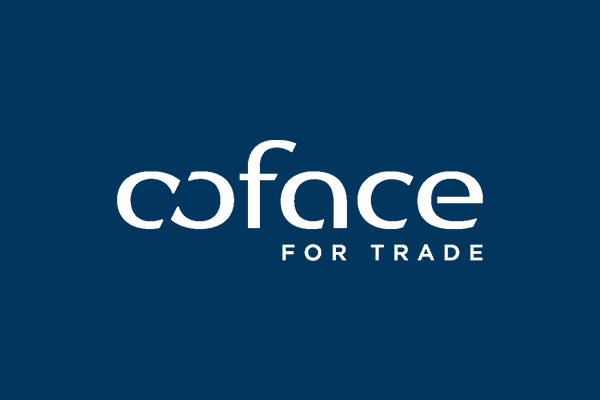Jonathan explains why there were no changes to sector and country assessments for the UK and Ireland despite the positive and negative forces at work in both countries.
Headlines
- Coface forecasts UK growth of 0.9% in 2024 (revised up from 0.6%) and 1.4% in 2025 (revised up from 1.1%) and our country risk rating is unchanged at A4 (reasonable). In Ireland, the risk assessment remains A3 (satisfactory), but we expect small company insolvencies to rise steeply.
- Global growth forecast for 2025 revised slightly downwards from 2.7% to 2.6% because of a fall in manufacturing activity in the Euro area.
- Four country upgrades: Albania (B), Costa Rica (A4) and Rwanda (A4) and Cyprus (A4). One downgrade: Israel (A4).
- 12 sector upgrades, half in the Asia Pacific region (notably ICT in Japan and agrifood in China, India and Australia). Five downgrades, including agrifood in France and ICT in Italy. Our risk assessments for UK sectors were unchanged.
Jonathan’s view:
What is Coface’s current assessment of the global economy?
As we enter the year’s final quarter, Central Banks finally seem to be winning the fight against inflation, with a global growth forecast of 2.6% in 2025, slightly revised downward due to ongoing struggles in the Eurozone. Germany’s manufacturing sector faces order shortfalls, while the US and China will see slower growth. Emerging markets (excluding China) are expected to drive nearly 40% of global growth, reflecting opportunities for businesses engaged in these regions.
Economic instability remains a concern, driven by sovereign debt pressures and the fiscal responses that follow. Globally, much depends on the upcoming US election outcome, while geopolitical tensions in the Middle East and the prolonged Ukraine-Russia conflict continue to add volatility.
The UK seems to be recovering so why has Coface not upgraded your country's risk assessment?
While the UK economy is on a recovery path with positive trends in inflation and wages, significant risks remain:
European Demand: Weakened Eurozone manufacturing and rising corporate insolvencies impact UK businesses with European trade ties.
Domestic Uncertainty: The recent Labour Government budget, announced on October 30, 2024, introduced significant tax increases, including a rise in employer national insurance contributions and adjustments to capital gains tax, aimed at supporting public services. At the same time, a further generous uptick in the national minimum wage was announced. While these measures could dampen short-term growth as companies need to adjust, their impact may be lessened if investment-focused policies that address productivity and foster economic growth are well financed, well structured, and well received.
Global Exposure: The open UK economy is sensitive to geopolitical shifts, such as rising energy prices and potential trade policy changes under a more protectionist US administration.
Ireland Outlook: GDP fell slightly in Q2 – can the economy rebound?
Ireland’s economy is supported by government measures and budget surpluses. Recent dips in GDP stems from slowed multinational activity, yet domestic growth remains strong.
We expect Ireland to benefit from lower global interest rates, rising multinational activity, and robust government support for domestic growth, thanks to a healthy budget surplus. The recent budget included personal tax cuts, cost-of-living supports, and a pledge to invest Apple’s tax windfall in infrastructure—addressing housing shortages driven by high migration and limited construction. Employment remains strong, with low unemployment rates.
However, insolvencies mostly among small businesses are rising fast, expecting to reach a seven-year high. This has not yet had a significant impact on jobs as most insolvencies are very small companies although this is alongside a big rise in hospitality sector closures.
A general election is approaching, and centrist parties are currently holding steady in the polls, while Sinn Féin’s (SF) support has softened. However, this could shift if SF runs a strong campaign and pivots to a more conservative stance on migration policy.
Exporter Risks and Opportunities
Emerging markets are expected to significantly drive global growth in 2025, outpacing more advanced economies, with the Gulf states and South America showing the most acceleration. Argentina, notably, is forecasted to grow by 3.5%, though it remains a high-risk environment.
Southeast Asia is projected to be the strongest growth region, with an average rate of 4.5%. The area is rapidly becoming a trade hub connecting the US, China, and EU, particularly in "connector countries" like Vietnam and Indonesia. Reflecting this trend, six of our sector upgrades this quarter were in the Asia-Pacific region, including ICT in Japan, where the global electronics and semiconductor industry is rebounding.
The full Country and Sector Risk report and infographics are available on the Coface website, where regular economic publications keep exporters updated on market trends. Our business risk dashboard and URBA350 tool offer invaluable insights—helping you monitor trade credit risk across countries, sectors, and millions of companies worldwide.



